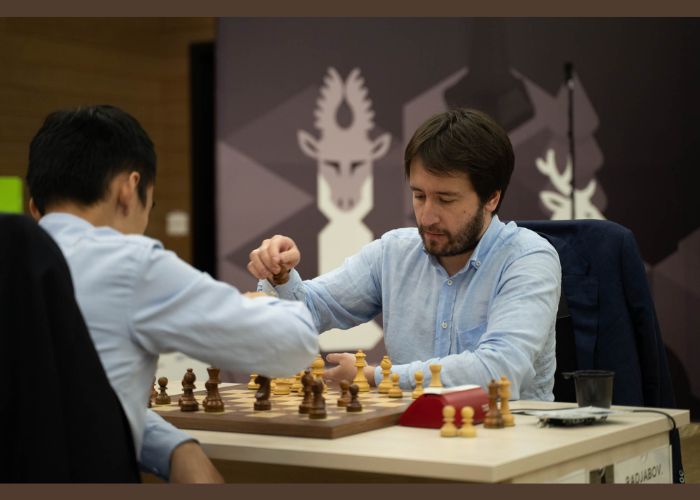A breakthrough year that solidified his standing as a world force befell young chess prodigy Teimour Radjabov in 2003. A tactical exploitation triumph over Arkadij Naiditsch in a Queen’s Pawn Game was one of his numerous remarkable victories that year. This match from a tournament in Linares, Spain, showcases Radjabov’s astute planning and meticulous execution. Come with me as I dissect the chessboard for all its strategic pyrotechnics. Let’s read below “Chess Tactics Radjabov Naiditsch 2003”:-
The Opening: A Double-Edged Sword
A very adaptable opening with many potential strategies, Radjabov chose to play the Queen’s Pawn Game (1.d4). The notoriously imbalanced Nimzo-Indian Defense (1…Nf6 2.c4 e6 3.Nc3 Bb4) was Naiditsch’s response. Quick piece activity and kingside pressure are Black’s goals, whereas spatial advantage and long-term positional supremacy are White’s.
In the first stage, each player carefully placed their pieces to have the most impact. In preparation for an invasion, Radjabov placed his rooks on open files. Naiditsch emphasized rapid piece development and dynamic queenside imbalances.
The Middlegame: Seeds of Tactical Opportunity
The position appeared precarious even before the middlegame began. To expose Naiditsch’s kingside structure and create opportunities for his rooks, Radjabov fearlessly sacrificed a piece with 15.Nxb7. Naiditsch had to make a pivotal choice because of this risky play.
[FEN “r1bqkbnr/pppp1ppp/2n5/1B2P3/4P3/5N2/PPPP1PPP/RNBQK2R w KQkq – 0 15”]
A complex tactical series began when Naiditsch chose to regain the pawn with 15…axb7. This choice made material equality possible, but it also left his monarch vulnerable to danger. Radjabov started to take advantage of these holes with his enhanced pieceplay.
A Cascade of Tactics: Radjabov Takes Control
Radjabov displayed exceptional tactical acumen in the subsequent moves. The decision he made A tactical imbalance is created when 16.Rc1 pins Naiditsch’s knight on f6. 16….Re8, an attempt at defense by Naiditsch, was met with Radjabov’s decisive response of 17.Qh5. This move, together with 18.Bxf6+ and 19.Qxe8# risks a strong double-check.
[FEN “r1bqk2r/pppp1ppp/2n5/1B2P3/3P4/5N2/PPPP1PPP/RNBQ1RK1 w – – 0 17”]
To avoid the check, Naiditsch played 17…g6. But Radjabov kept on with his attack plan with 18.Rxc6! He took advantage of the situation by removing the defender from c6 and setting up a battery against Naiditsch’s king with the rook and queen he had given up.
[FEN “r1bqk2r/pppp1p1p/2n2P2/1B2P3/3P4/5N2/PPP1P1PP/RNBQ1RK1 w – – 0 18”]
Naiditsch had a tough time of it. Discovering 19.Nxe6+ would result in winning the queen and making a recapturing with 18…bxc6 tough. After 18…Bxc6, Radjabov’s last defensive move, he scored the winning point with 19.Nxe6 fxe6. The value of Qxe6+ is what? The outcome of this daring move was checkmate after 20…Kf7 and 21.R7c7#.
Read More:- Chess Tactics: Zhu — Wagner, 2022
Conclusion: Chess Tactics Radjabov Naiditsch 2003
The fact that Radjabov prevailed against Naiditsch even though their material situations seemed to be identical is more proof of his superior tactical understanding. A disastrous tactical sequence rendered Naiditsch defenseless, thanks to his readiness to sacrifice a piece, keen observation, and precise move selection. As a chess game, it trains players to keep an eye out for strategic possibilities and act swiftly to take them. I hope you like reading “Chess Tactics Radjabov Naiditsch 2003”.
